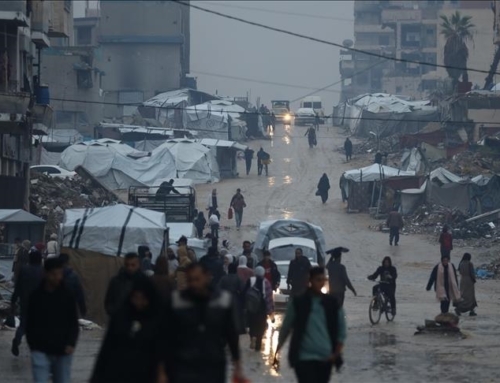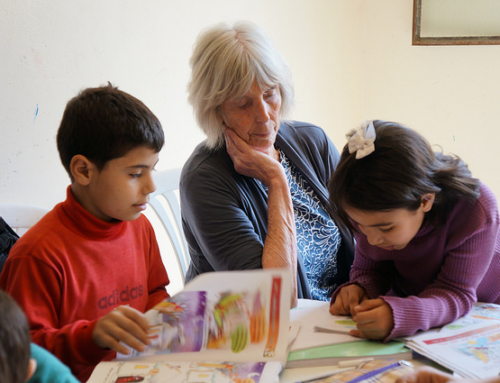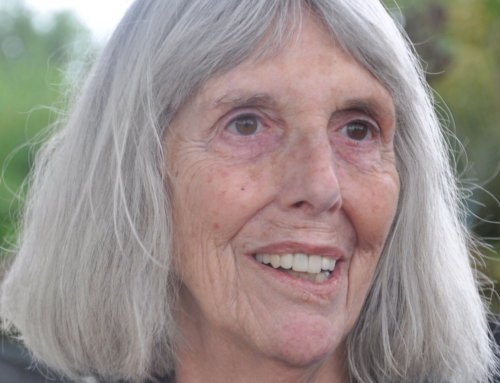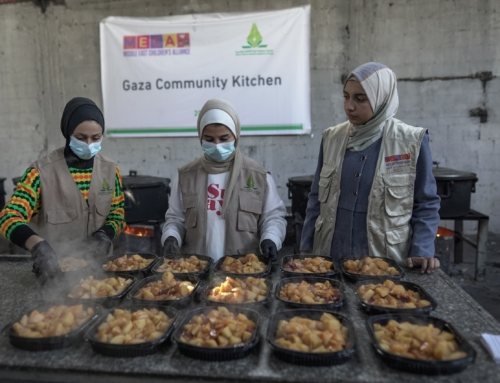By Eman Al-Astal
On October 4th, at around 1:00 a.m., an Israeli airstrike bombed the home of Tulip, a ten-year-old Palestinian girl who was asleep in her family’s living room. Tulip was killed.
Tulip was one of the children participating in our psychosocial support project designed to offer spaces for Palestinian children in Gaza to express themselves and find moments, albeit unsustainable and temporary, of relief and joy amid the genocide.
After hearing the news of her martyrdom, I met with three facilitators who worked closely with Tulip: Ghada, Mohammed, and Areej. Tulip was not a passing presence in their lives, she’s left a mark on their hearts.
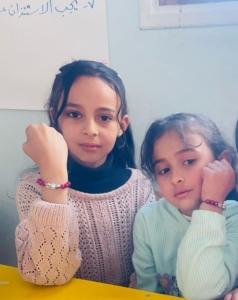
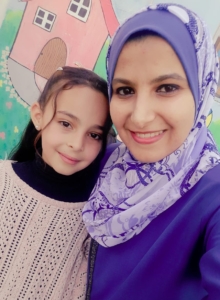 Ghada, the project’s Visual Art Facilitator, recalled Tulip with a smile struggling not to cry; “Tulip loved to draw flowers and houses. Her favorite color was purple. Always polite, calm, and beautifully dressed. She was a breeze.” She paused before continuing, “In this photo, she made a bracelet with her friends here in my corner. Tulip was loved by everyone. I worry now for her sister, Mira; they were always together in the project.”
Ghada, the project’s Visual Art Facilitator, recalled Tulip with a smile struggling not to cry; “Tulip loved to draw flowers and houses. Her favorite color was purple. Always polite, calm, and beautifully dressed. She was a breeze.” She paused before continuing, “In this photo, she made a bracelet with her friends here in my corner. Tulip was loved by everyone. I worry now for her sister, Mira; they were always together in the project.”
In fear of the constant loss, Ghada developed a habit of “documenting” every child she supports during the psychosocial project. So when news of their killing reaches her, she looks through the photos to remember each child as they were. Since Tulip’s killing, Ghada could not stop crying over her picture. “Our children deserve life; every smile of theirs deserves to be protected,” Ghada added.
Mohammed was not only her Dabkeh trainer but he was also Tulip’s cousin. He accompanied her and Mira, her sister, to the psychosocial project every day. Mohammed spoke to us of what Tulip used to tell him about her future and her dreams; “Tulip wanted to become a journalist and a photographer. Whenever she saw me with my camera, she’d come over to learn how to take pictures.”
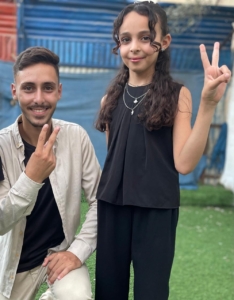
He recalls their final encounter, “I saw her on Friday morning. On the same night, she was killed while sleeping in the living room. I rushed to the hospital when I heard the news. I saw her face covered in shrapnel.” He paused, then repeated almost the same words Ghada had used, “Tulip was a breeze; gentle, light, and unforgettable. I still can’t walk down the same street we used to take together.”
Areej, the drama facilitator, met Tulip for the last time two days before the fatal Israeli airstrike.“I saw her by chance on the street. She ran up to me, hugged me tightly, and climbed into my arms. I told her, ‘That’s enough you can let me go, habibti Tulip,’ and she said, ‘No, I love you.’”
Like most in Gaza, Areej was not a stranger to the feeling of such abrupt loss, as she lost most of her family during the Israeli genocide. And losing Tulip has reopened that wound to Areej; “What keeps me going though is knowing that these children are our responsibility. Even under these conditions, we have to keep smiling for them.”
MECA joins Tulip’s facilitators, family members, friends, in mourning Tulip – one of tens of thousands of children that Israel has killed in Gaza over the last two years. Now, Tulip’s sister Mira and hundreds of thousands of other children live with invisible wounds — deep psychological scars of loss and fear. Against the backdrop of a fragile and trembling ceasefire, all our children are suffering.
And with so much discussion on Gaza’s future and reconstruction, I would like to say loud and clear that rebuilding Gaza is not merely getting cement and putting one stone on top of the other, that’s the bare minimum. True reconstruction of Gaza must begin with restoring and healing Palestinian childhood, mental health support, true safe spaces, protection and dignity. No child should experience so much killing, displacement and starvation. Mira should have never lost her dear sister. Tulip should have lived and continued to be the girl full of life, a breeze, who loved the color purple.


